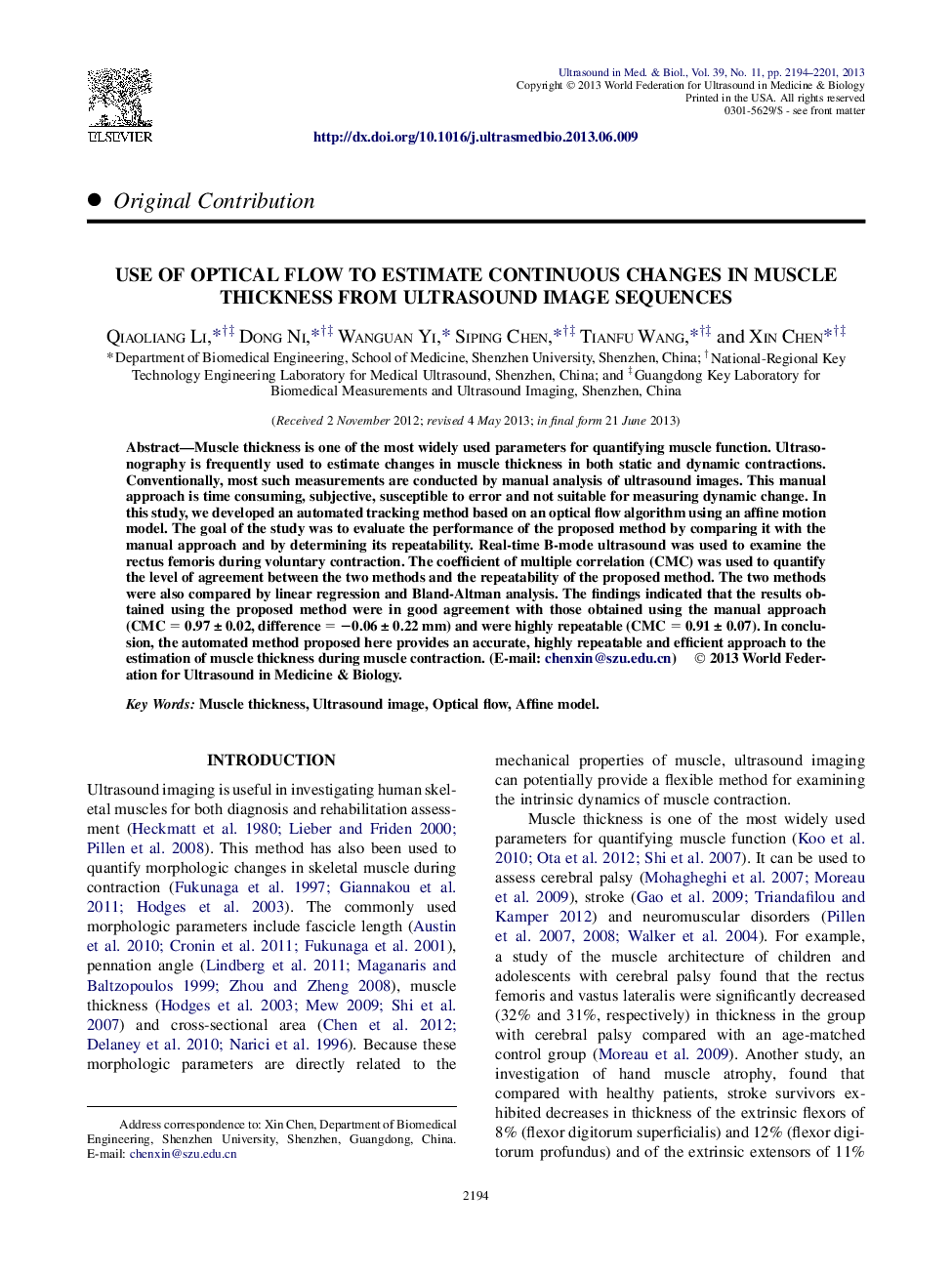| Article ID | Journal | Published Year | Pages | File Type |
|---|---|---|---|---|
| 10691922 | Ultrasound in Medicine & Biology | 2013 | 8 Pages |
Abstract
Muscle thickness is one of the most widely used parameters for quantifying muscle function. Ultrasonography is frequently used to estimate changes in muscle thickness in both static and dynamic contractions. Conventionally, most such measurements are conducted by manual analysis of ultrasound images. This manual approach is time consuming, subjective, susceptible to error and not suitable for measuring dynamic change. In this study, we developed an automated tracking method based on an optical flow algorithm using an affine motion model. The goal of the study was to evaluate the performance of the proposed method by comparing it with the manual approach and by determining its repeatability. Real-time B-mode ultrasound was used to examine the rectus femoris during voluntary contraction. The coefficient of multiple correlation (CMC) was used to quantify the level of agreement between the two methods and the repeatability of the proposed method. The two methods were also compared by linear regression and Bland-Altman analysis. The findings indicated that the results obtained using the proposed method were in good agreement with those obtained using the manual approach (CMC = 0.97 ± 0.02, difference = â0.06 ± 0.22 mm) and were highly repeatable (CMC = 0.91 ± 0.07). In conclusion, the automated method proposed here provides an accurate, highly repeatable and efficient approach to the estimation of muscle thickness during muscle contraction.
Related Topics
Physical Sciences and Engineering
Physics and Astronomy
Acoustics and Ultrasonics
Authors
Qiaoliang Li, Dong Ni, Wanguan Yi, Siping Chen, Tianfu Wang, Xin Chen,
